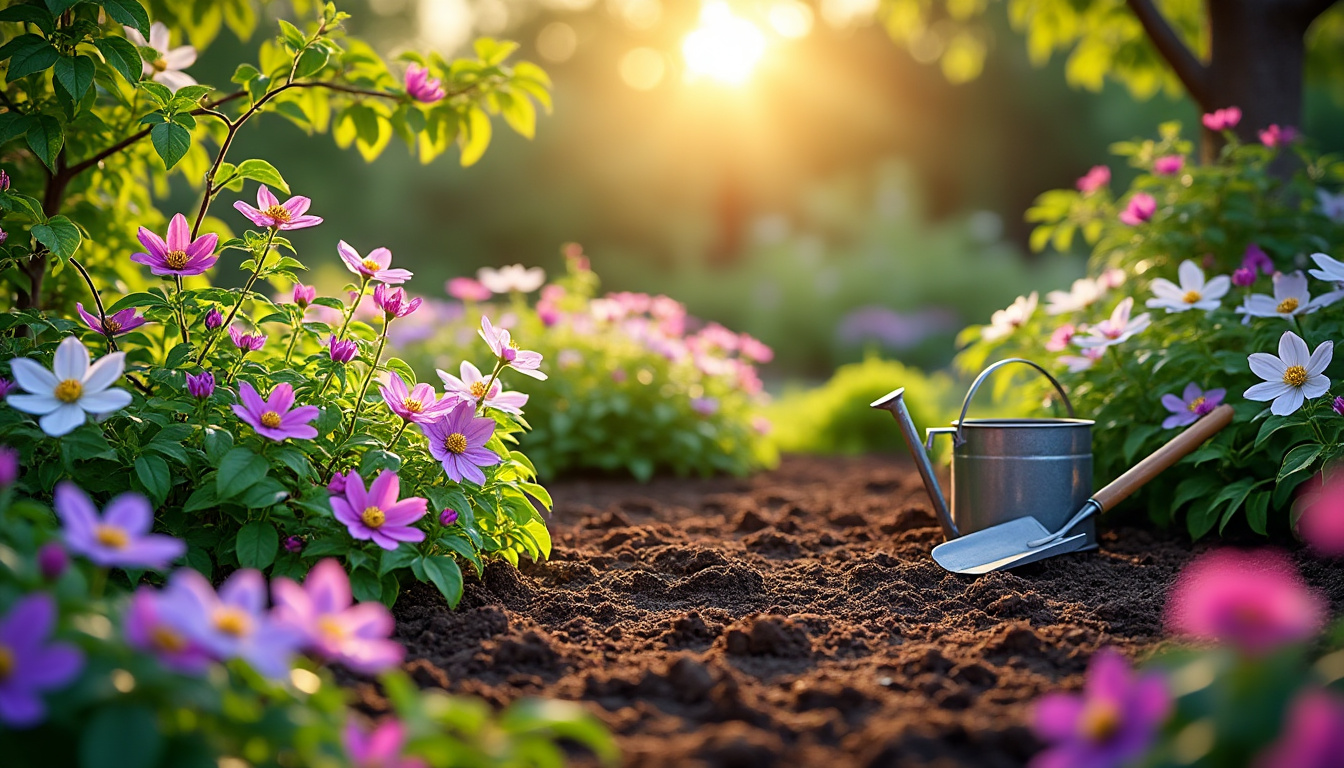A charming addition to any garden, clematis vines stand out with their spectacular blooms and graceful climbing abilities. To achieve optimal growth and vibrant flowers, understanding the best time to plant these stunning climbers is essential. Various factors such as soil temperature, specific clematis varieties, and local climate conditions play significant roles in determining the ideal planting time. This article explores the nuances of planting clematis, offering insights to both novice and seasoned gardeners alike.
- Identifying Suitable Varieties for Your Zone
- Best Planting Seasons for Clematis
- Signs Indicating It’s Time to Plant
- Key Soil Preparation Techniques
- Caring for Newly Planted Clematis
- Common Challenges and Solutions
Identifying Suitable Varieties for Your Zone
Selecting the right clematis varieties tailored to specific hardiness zones can significantly influence growth success. In warmer regions, such as Zone 6, clematis varieties thrive remarkably well. Popular options include:
| Variety | Characteristics |
|---|---|
| Jackmanii | Deep purple flowers that create a stunning display. |
| Nelly Moser | Features a delightful mix of pink and white petals. |
| Sweet Autumn Clematis | Fragrant white blooms that appear late in the season. |
Choosing varieties based on their growth requirements and adaptation to local conditions elevates the chances of a thriving clematis garden. Consider factors like resilience and blooming periods when making selections.
Best Planting Seasons for Clematis
The timing for planting clematis varies according to local climate conditions. The ideal planting periods generally occur in spring (March to May) or fall (September to October). During these seasons, soil temperatures and moisture levels are conducive for young plants to establish strong root systems.
- Spring Planting: As temperatures rise and daylight increases, clematis begins to actively grow. Planting in spring provides ample time for root establishment before winter.
- Fall Planting: In regions with milder autumns, planting in early fall allows clematis to focus on developing roots without the added stress of heat.
Signs Indicating It’s Time to Plant
Monitoring environmental conditions offers essential clues for determining the optimal planting time. Key indicators include:
- Soil Temperature: Soil temperatures should ideally be between 50°F and 55°F (10°C to 13°C). A soil thermometer can facilitate accurate measurements.
- Bud Swelling: Observe the swelling of buds as winter transitions to spring; this indicates the plant is ready for planting.
- Absence of Frost: Ensuring the last frost has passed protects young clematis from potential damage.
A combination of these signs ensures timely planting, fostering a strong start for clematis in the garden.
When is the best time to prune magnolia trees?
Key Soil Preparation Techniques
Optimal growth for clematis begins with proper soil preparation. Take the following steps:
- Soil Testing: Conduct soil tests to determine pH levels. Clematis prefers slightly acidic to neutral soil (pH 6.0 – 7.0).
- Amend the Soil: Add organic matter such as compost or well-rotted manure to enhance soil fertility and drainage. This enriches the soil and creates a thriving environment for root development.
- Proper Drainage: Ensure well-draining soil to prevent water retention, a critical aspect that can lead to root rot.
These steps not only enhance the soil’s nutrient content but also create the optimal conditions for clematis roots to thrive.
Caring for Newly Planted Clematis
Following planting, clematis requires ongoing care to flourish:
- Watering: Regular watering is crucial, aiming for about one inch of water weekly. Avoid waterlogging by watering deeply at the base.
- Mulching: Apply organic mulch around the base to retain moisture, insulate roots, and suppress weeds.
- Training and Support: Install a trellis or support structure to guide growth, helping clematis reach sunlight effectively.
Common Challenges and Solutions
Gardening enthusiasts often face challenges with clematis growth. Addressing common issues ensures smooth cultivation:
- Overwatering and Root Rot: Allow soil to dry between waterings and ensure proper drainage to avoid root issues.
- Insufficient Sunlight: Ensure placement in an area receiving at least six hours of sunlight daily.
- Pest Management: Regularly inspect for pests such as aphids. Use insecticidal soap or introduce beneficial insects for natural pest control.
Addressing these challenges reduces the likelihood of setbacks in clematis growth, promoting a vibrant and flourishing garden.
Frequently Asked Questions
1. What is the best time of year to plant clematis?
Spring or early fall typically provides ideal conditions for planting clematis.
2. How do I know when to water my clematis?
Monitor soil moisture; watering should occur when the top inch feels dry.
3. Can clematis be grown in containers?
Yes, choose a large container with adequate drainage and provide a support structure.
4. What type of fertilizer is best for clematis?
A balanced slow-release fertilizer is recommended for optimal growth, applied in early spring.
5. How often should I prune clematis?
Pruning frequency varies; Group 1 varieties are pruned after flowering, while Groups 2 and 3 are pruned in early spring.
Resources:
For more information on clematis planting, visit reputable nurseries such as Burpee, Gardener’s Supply Company, and Proven Winners.
















